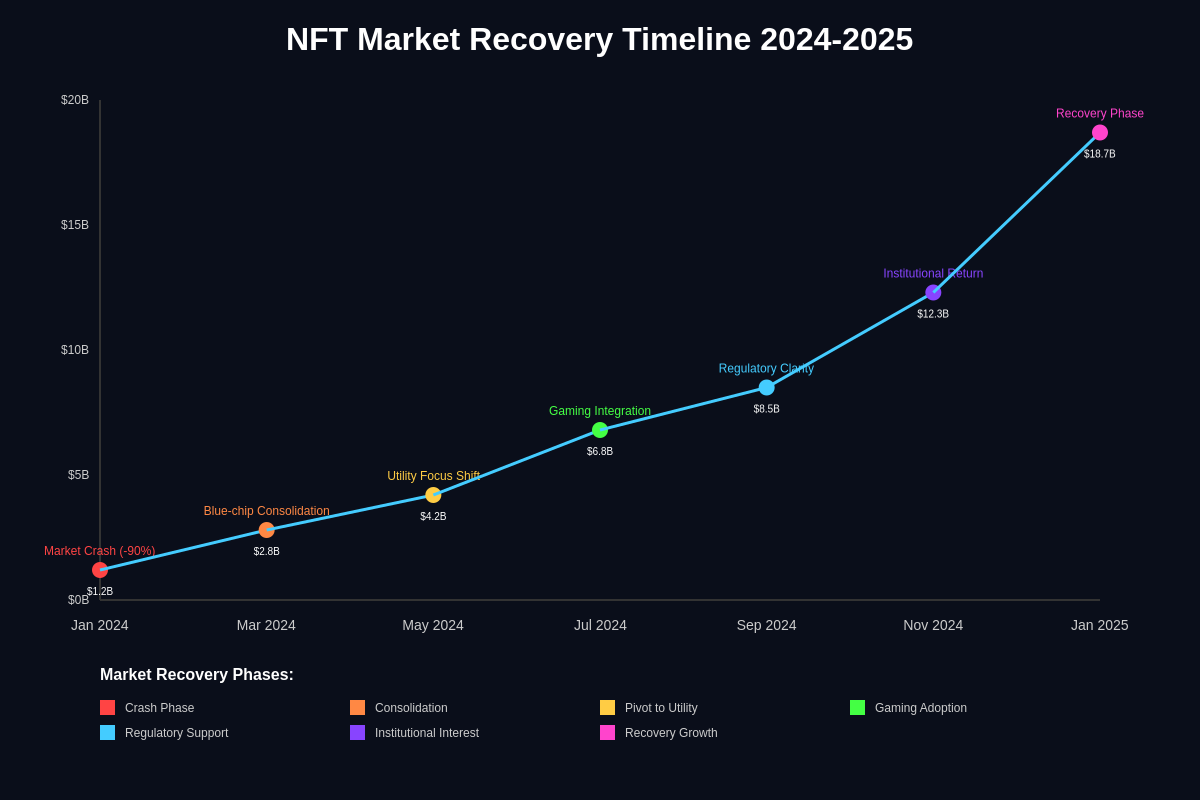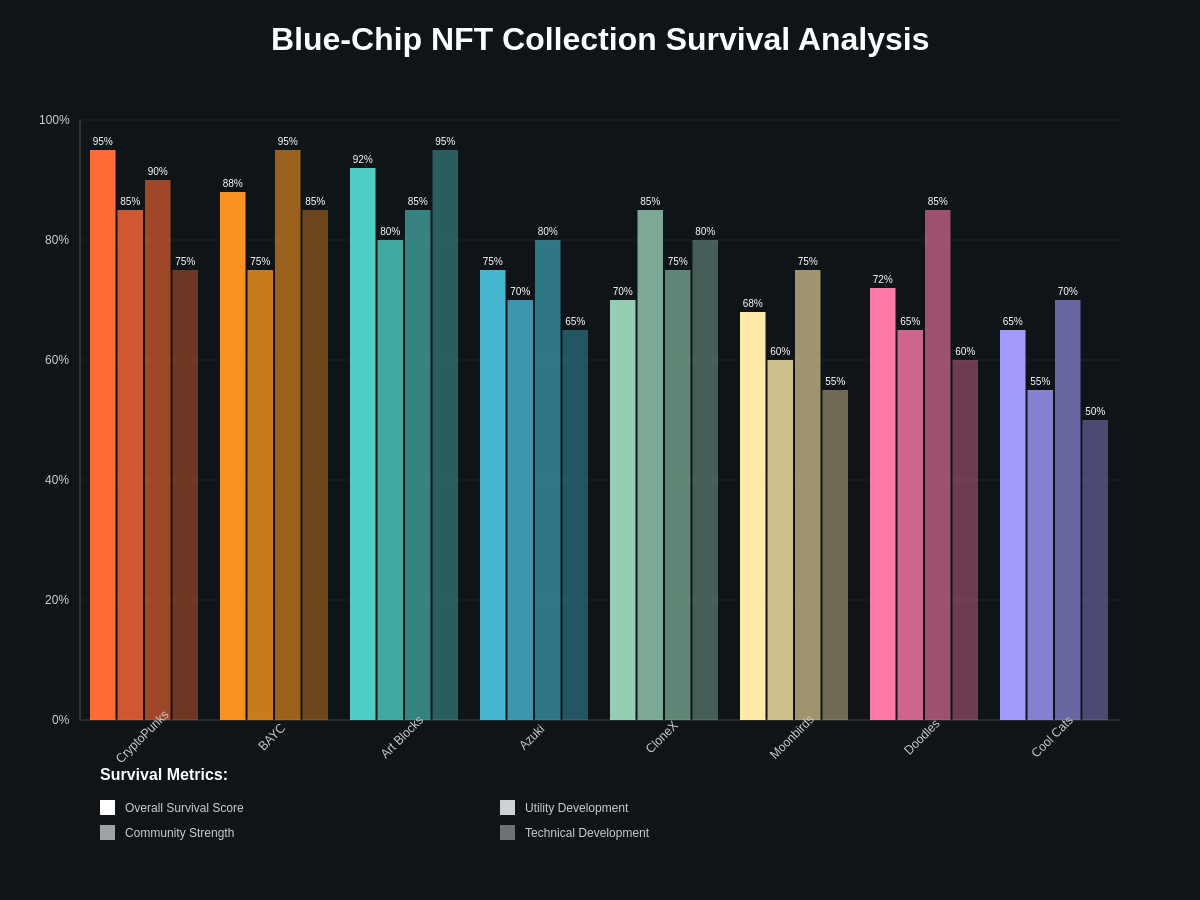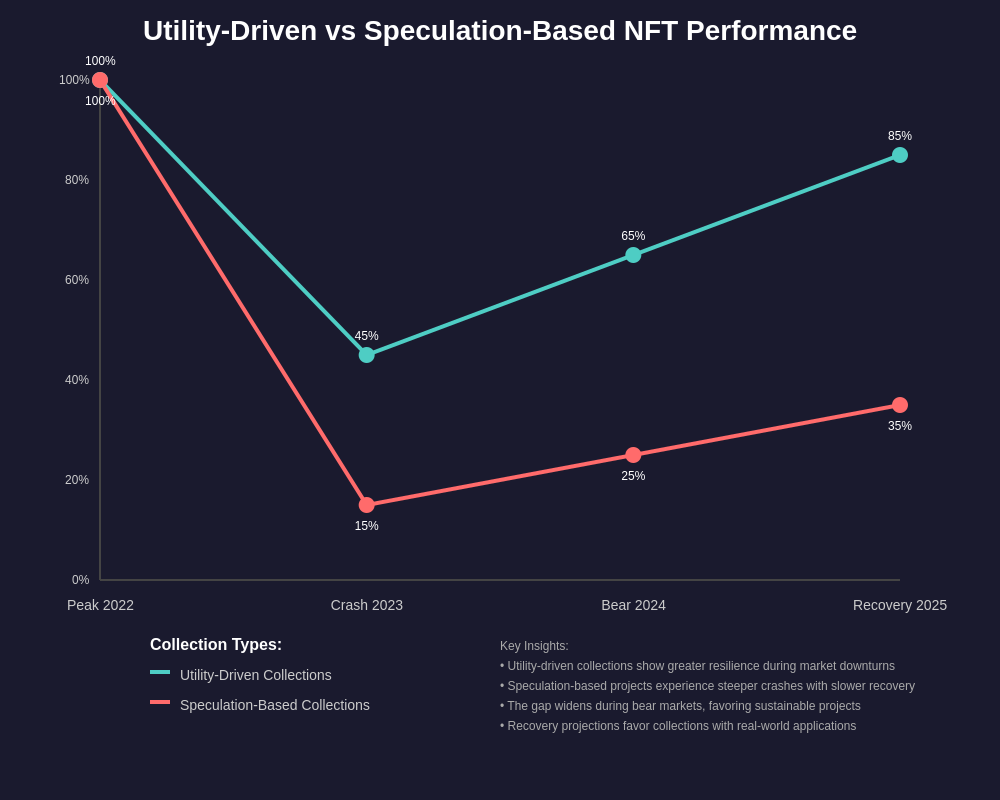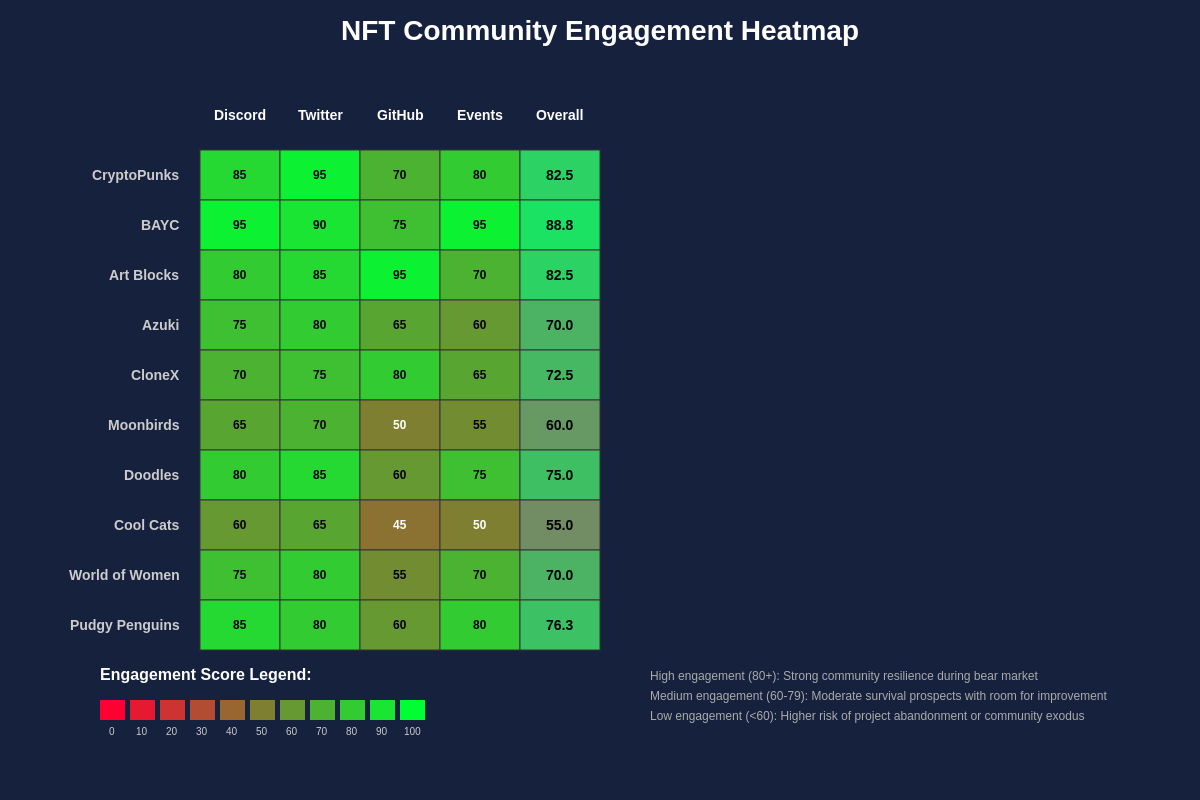The Great NFT Reset of 2024
The non-fungible token market has undergone a dramatic transformation throughout 2024, with trading volumes declining over 90% from their peak levels while floor prices for even blue-chip collections have plummeted to fractions of their all-time highs. This market correction, often referred to as the NFT winter, has created a harsh environment where only the strongest collections with genuine utility, robust communities, and sustainable business models are surviving the prolonged bear market conditions.

The current NFT landscape represents a fundamental shift from the speculative euphoria of 2021-2022, when digital artwork and profile picture collections commanded millions of dollars in sales, to a more mature market focused on practical applications, long-term value creation, and sustainable ecosystem development. This evolution has forced market participants to reevaluate what constitutes genuine value in the NFT space beyond mere speculation and celebrity endorsements.
Understanding which NFT collections will emerge stronger from this bear market requires analyzing multiple factors including community engagement metrics, utility development, brand partnerships, technological innovation, and the ability to maintain relevance during extended periods of reduced market activity. The collections that survive this period will likely define the next phase of NFT evolution as the market matures from its experimental beginnings into a more established digital asset class.
Track NFT market performance and analytics on TradingView to monitor collection floor prices, volume trends, and market sentiment indicators that provide insights into which projects are maintaining strength during the bear market.
Historical Context and Market Cycles
The NFT market’s current downturn follows a pattern consistent with previous cryptocurrency market cycles, where periods of explosive growth are followed by significant corrections that separate sustainable projects from purely speculative ventures. The 2021-2022 NFT boom saw collections like CryptoPunks reach floor prices exceeding 100 ETH while newer projects regularly launched with multi-million dollar trading volumes on their first day of release.
This unprecedented growth attracted mainstream media attention, celebrity endorsements, and institutional investment, creating a feedback loop that drove prices to unsustainable levels while attracting participants with little understanding of blockchain technology or digital collectibles. The subsequent correction has eliminated many projects that lacked fundamental value propositions beyond their initial marketing campaigns and influencer partnerships.
Previous bear markets in cryptocurrency have demonstrated that projects with strong communities, continuous development, and clear value propositions tend to emerge stronger when market conditions improve. The NFT space is experiencing a similar winnowing process, where collections that invested in long-term sustainability rather than short-term hype are maintaining their relevance and community engagement despite reduced trading activity.
The evolution from speculative trading to utility-focused development represents a natural maturation process for the NFT market, similar to how the internet evolved from the dot-com bubble to become essential infrastructure for modern commerce and communication. Collections that adapt to this changing environment by developing practical applications and sustainable business models are positioning themselves for success in the next market cycle.
Market data analysis through comprehensive charting tools reveals that NFT collections with consistent development activity and community engagement have shown greater price stability during the bear market compared to projects that relied primarily on speculative trading volume.
Blue-Chip Collections: Analyzing Survival Prospects
The term “blue-chip” in the NFT space refers to collections that have established strong brand recognition, sustained community engagement, and demonstrated resilience across multiple market cycles. These collections typically include CryptoPunks, Bored Ape Yacht Club, Art Blocks, and other projects that achieved significant cultural impact during the market’s peak growth period.

CryptoPunks, as one of the earliest NFT projects on Ethereum, has maintained its position as a digital art historical artifact despite significant price declines from peak levels. The collection’s significance as a pioneer in the NFT space, combined with its limited supply of 10,000 unique characters, provides fundamental value that extends beyond speculative trading. Many long-term holders view Punks as digital antiquities that represent the early days of blockchain-based art and collectibles.
Bored Ape Yacht Club (BAYC) has attempted to evolve beyond its origins as a profile picture collection by developing expanded intellectual property rights, metaverse integration, and brand licensing opportunities. The collection’s parent company, Yuga Labs, has invested heavily in creating a broader ecosystem around the BAYC brand, including virtual land sales, token launches, and entertainment partnerships that provide multiple revenue streams beyond NFT trading.
Art Blocks represents a different approach to NFT sustainability through its focus on generative art and artist curation. The platform’s emphasis on algorithmic art creation and its selective curation process has helped maintain quality standards while providing ongoing value through new releases and artist collaborations. The technical innovation behind generative art collections provides educational and artistic value that transcends pure speculation.
The survival prospects for blue-chip collections depend largely on their ability to maintain community engagement during extended periods of reduced trading activity while developing new use cases that provide value beyond ownership status. Collections that successfully transition from speculative assets to utility-driven ecosystems are more likely to thrive when market conditions improve.
Gaming and Metaverse Integration
Gaming-focused NFT collections have shown particular resilience during the bear market due to their inherent utility within virtual environments and gaming ecosystems. Unlike profile picture collections that derive value primarily from social status and speculation, gaming NFTs provide functional benefits within their respective platforms, creating ongoing demand independent of broader market sentiment.
Projects like Axie Infinity, despite facing significant challenges including security breaches and economic model adjustments, have demonstrated the potential for NFT integration in gaming through play-to-earn mechanics and virtual asset ownership. The concept of true digital ownership within gaming environments addresses long-standing issues with traditional gaming models where players invest time and money in virtual assets they don’t actually own.
Metaverse land collections, including Decentraland, The Sandbox, and Otherdeeds for Otherside, represent another category of utility-focused NFTs that provide specific functions within virtual worlds. These digital real estate assets enable owners to build virtual experiences, host events, and generate revenue through various virtual economy activities, providing use cases that extend beyond simple collectibility.
The integration of NFTs with established gaming platforms and the development of blockchain-native games has created sustainable demand for certain collections while eliminating others that failed to deliver on their gaming promises. Projects that successfully implemented functional gaming mechanics and sustainable economic models have maintained active user bases despite broader market challenges.
Virtual world development and metaverse analytics tracking provide insights into which gaming and metaverse NFT collections are maintaining user engagement and development progress during the bear market, indicating their potential for long-term survival and growth.
Utility-Driven Projects and Real-World Applications
The bear market has accelerated the development of NFT projects that provide tangible utility beyond speculation, with successful collections increasingly focused on solving real-world problems or providing specific services to their communities. These utility-driven approaches create sustainable value propositions that maintain relevance regardless of broader market conditions.

Membership and access-based NFT collections have proven particularly resilient by providing ongoing benefits to holders, including exclusive content, event access, educational resources, and community networking opportunities. Projects like Proof Collective and similar membership-focused collections maintain value through continuous delivery of services rather than relying solely on secondary market trading.
Supply chain and authentication applications represent another growing category of utility-focused NFTs, where digital certificates provide verification of authenticity, ownership history, and product information for physical goods. These applications address real business needs while creating sustainable demand for NFT technology beyond speculative trading.
Professional services and business applications of NFT technology have gained traction during the bear market as companies explore practical implementations of blockchain-based ownership and verification systems. Legal documents, intellectual property rights, and professional certifications implemented through NFT technology provide clear utility that justifies their existence independent of market speculation.
The development of NFT-based loyalty programs, subscription services, and business tools has created new categories of digital assets that generate value through their practical applications rather than their collectibility or social status. These utility-focused projects are better positioned to survive extended bear market conditions while building sustainable business models.
Community Strength and Engagement Metrics
Community engagement has emerged as one of the most reliable predictors of NFT collection survival during bear market conditions, with projects maintaining active, engaged communities demonstrating significantly better resilience than those that relied primarily on trading volume and price appreciation. Strong communities provide ongoing support, development feedback, and organic marketing that sustains projects through difficult market periods.

Discord server activity, Twitter engagement, and real-world meetup attendance provide quantifiable metrics for assessing community strength, with successful collections typically maintaining high levels of participation across multiple platforms despite reduced trading activity. These communities often evolve beyond simple price discussions to focus on project development, creative collaboration, and shared interests that extend beyond financial speculation.
Community-driven development has become increasingly important as NFT projects adapt to bear market conditions, with active communities contributing to project roadmaps, providing user feedback, and participating in governance decisions that shape the future direction of their collections. This collaborative approach creates stronger bonds between holders and projects while distributing development responsibility across the community.
The transition from speculative communities focused on price movements to engaged communities centered around shared interests and project development represents a fundamental shift in how successful NFT projects operate. Collections that successfully made this transition have maintained relevance and community engagement despite significant price declines.
Social media analytics and community sentiment tracking provide valuable insights into which NFT collections are maintaining strong community engagement during the bear market, indicating their potential for long-term sustainability and growth when market conditions improve.
Technological Innovation and Development Activity
Ongoing technological development and innovation have become critical factors distinguishing surviving NFT collections from those that have become inactive or abandoned during the bear market. Projects that continue investing in technical improvements, new features, and expanded functionality demonstrate long-term commitment while providing ongoing value to their communities.
Smart contract upgrades, new minting mechanisms, and integration with emerging blockchain technologies showcase continued development activity that indicates project sustainability. Collections that implement technical improvements such as gas optimization, cross-chain compatibility, and enhanced metadata storage demonstrate professional development practices that inspire confidence in their long-term viability.
The adoption of new standards and protocols within the NFT space, including improved royalty enforcement, enhanced metadata standards, and better interoperability solutions, has favored collections that actively participate in these technological advances. Projects that remain at the forefront of NFT technology development are better positioned to benefit from future market growth and adoption.
Research and development investments in areas such as artificial intelligence integration, virtual reality compatibility, and advanced smart contract functionality have helped distinguish serious projects from those that ceased development after their initial launch. These technological investments create competitive advantages while providing new sources of value for collection holders.
Development activity tracking through GitHub commits, smart contract updates, and feature releases provides objective measures of project sustainability that complement community engagement metrics in assessing which NFT collections are likely to survive the bear market. Projects with consistent development activity demonstrate ongoing commitment to their communities and long-term vision.
Regulatory Environment and Compliance
The regulatory landscape surrounding NFTs has evolved significantly during the bear market period, with increased scrutiny from government agencies and the implementation of new compliance requirements that affect how NFT projects operate and market their collections. Projects that proactively address regulatory concerns and implement appropriate compliance measures are better positioned for long-term survival.
Securities regulations, anti-money laundering requirements, and tax reporting obligations have created new operational challenges for NFT projects while eliminating some collections that failed to meet evolving regulatory standards. Projects that invested in legal compliance and regulatory consultation have maintained operational continuity while others faced enforcement actions or ceased operations.
International regulatory variations and the global nature of NFT markets have created complex compliance requirements that favor well-funded projects with professional legal support over smaller collections operating without proper regulatory guidance. The ability to navigate these regulatory challenges has become a significant competitive advantage in the current market environment.
Intellectual property considerations and copyright compliance have gained increased importance as the NFT market matures, with successful collections ensuring proper licensing agreements and IP ownership while avoiding potential legal disputes that could threaten their long-term viability. Clear IP ownership and licensing arrangements provide legal certainty that supports collection value and sustainability.
Regulatory compliance tracking and legal framework analysis help identify which NFT collections are adapting to the evolving regulatory environment and implementing appropriate compliance measures that position them for continued operation as regulations continue to develop.
Market Analysis and Valuation Metrics
Traditional valuation methodologies have proven inadequate for assessing NFT collections during bear market conditions, requiring the development of new analytical frameworks that consider utility, community engagement, and long-term value creation beyond simple price and volume metrics. These evolving valuation approaches help identify collections with sustainable value propositions.
Floor price stability, trading volume consistency, and holder retention rates provide insights into collection health during market downturns, with collections maintaining these metrics despite broader market challenges demonstrating stronger fundamental value. These metrics help distinguish between temporary price declines and fundamental project failures.
Comparative analysis across different NFT categories reveals that utility-focused collections have generally maintained better valuation metrics than purely collectible or speculative projects, supporting the thesis that practical applications provide more sustainable value propositions than aesthetic or social status considerations alone.
Market capitalization, holder distribution, and transaction patterns provide additional data points for assessing collection sustainability, with healthy collections typically showing diversified ownership, regular transaction activity, and stable or growing market capitalization despite overall market declines.
Financial modeling and comprehensive market analysis tools enable detailed evaluation of NFT collection performance across multiple metrics, helping identify projects that demonstrate strong fundamentals despite challenging market conditions.
Future Outlook and Recovery Scenarios
The path to NFT market recovery will likely be gradual and selective, with surviving collections emerging stronger while failed projects fade into digital obscurity. This selective recovery process will favor collections that maintained development activity, community engagement, and utility development during the bear market while eliminating projects that relied solely on speculative trading.
Integration with traditional industries and mainstream adoption of NFT technology for practical applications will drive the next phase of market growth, with successful collections positioned to benefit from increased institutional adoption and real-world use case development. This transition from speculation to utility represents the maturation of the NFT market.
Technological advances including improved user experiences, reduced transaction costs, and enhanced functionality will enable broader NFT adoption while providing competitive advantages to collections that integrate these improvements. Projects that remain technically current and innovative will be better positioned for future growth.
Market recovery scenarios range from gradual adoption driven by utility development to rapid growth triggered by renewed mainstream interest and institutional investment. Collections that survive the current bear market will be well-positioned to benefit from any recovery scenario while those that fail to adapt will miss future opportunities.
Economic indicators and market trend analysis suggest that NFT market recovery will correlate with broader cryptocurrency market conditions while being driven by fundamental developments in utility, technology, and mainstream adoption rather than pure speculation.
Investment Strategies and Risk Management
Surviving the NFT bear market requires sophisticated risk management strategies that go beyond traditional portfolio diversification to include careful evaluation of project fundamentals, community strength, and development activity. Successful NFT investors during this period have focused on collections with strong utility propositions and active communities rather than chasing speculative opportunities.
Due diligence processes for NFT investments have evolved to include technical audits, community analysis, legal compliance review, and long-term roadmap evaluation, providing more comprehensive assessment frameworks than the superficial analysis that characterized the speculative boom period. These enhanced evaluation methods help identify collections with genuine long-term potential.
Portfolio management strategies that balance blue-chip stability with utility-focused growth opportunities have proven most effective during bear market conditions, with investors maintaining exposure to established collections while selectively investing in innovative projects that demonstrate clear value propositions and sustainable development.
Risk mitigation techniques including position sizing, diversification across NFT categories, and regular portfolio rebalancing help manage the inherent volatility and uncertainty in the NFT market while maintaining exposure to potential recovery opportunities. These disciplined approaches contrast sharply with the speculative behavior that characterized peak market conditions.
Long-term investment perspectives and strategic market analysis provide frameworks for evaluating NFT collections based on their potential for sustained value creation rather than short-term price movements, helping investors identify projects likely to thrive in the post-bear market environment.
Conclusion and Market Predictions
The NFT market’s current bear market represents a necessary correction that is eliminating speculative excess while allowing genuine innovation and utility development to emerge as the primary drivers of value creation. Collections that survive this period will have demonstrated their ability to provide sustained value through community engagement, technological innovation, and practical applications rather than mere speculation.
The transition from a speculation-driven market to a utility-focused ecosystem represents the natural evolution of NFT technology from experimental curiosity to practical tool with real-world applications. This maturation process will likely result in a smaller but more sustainable NFT market focused on solving actual problems and providing genuine value to users.
Predictions for market recovery center around the development of mainstream applications, institutional adoption, and integration with traditional business processes, suggesting that surviving collections will be those that successfully bridge the gap between blockchain technology and practical utility. The collections that emerge from this bear market will define the next phase of NFT evolution.
The lessons learned during this bear market period will inform future NFT development and investment strategies, with greater emphasis on sustainable business models, community building, and utility development rather than speculative trading and social media marketing. These fundamental improvements will create a stronger foundation for long-term market growth.
Market analysis and trend forecasting using professional trading tools indicate that the NFT collections surviving the current bear market will be well-positioned to benefit from future growth cycles while contributing to the broader adoption of blockchain technology in creative industries, gaming, and digital ownership applications.
Disclaimer: This article is for informational purposes only and should not be considered financial advice. NFT investments carry significant risks including total loss of principal. The NFT market is highly volatile and speculative. Past performance does not guarantee future results. Readers should conduct their own research and consult with qualified financial advisors before making any investment decisions. The author may hold positions in NFT collections mentioned in this article.